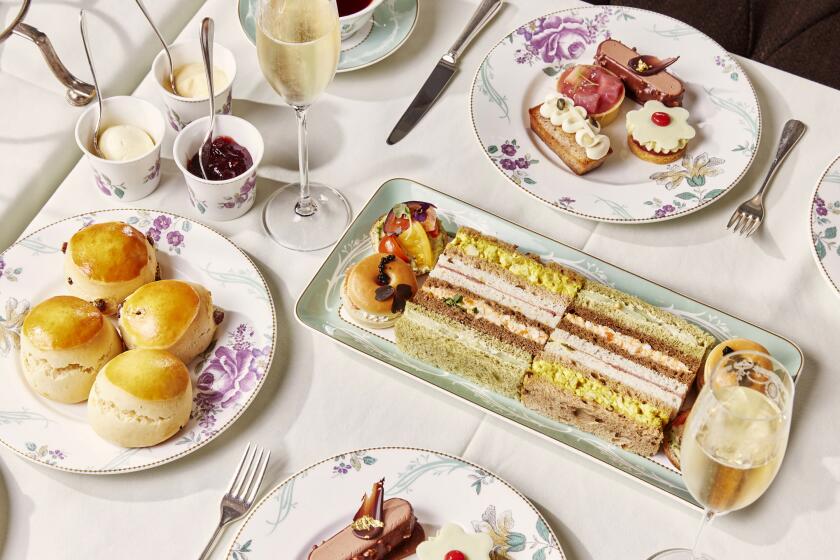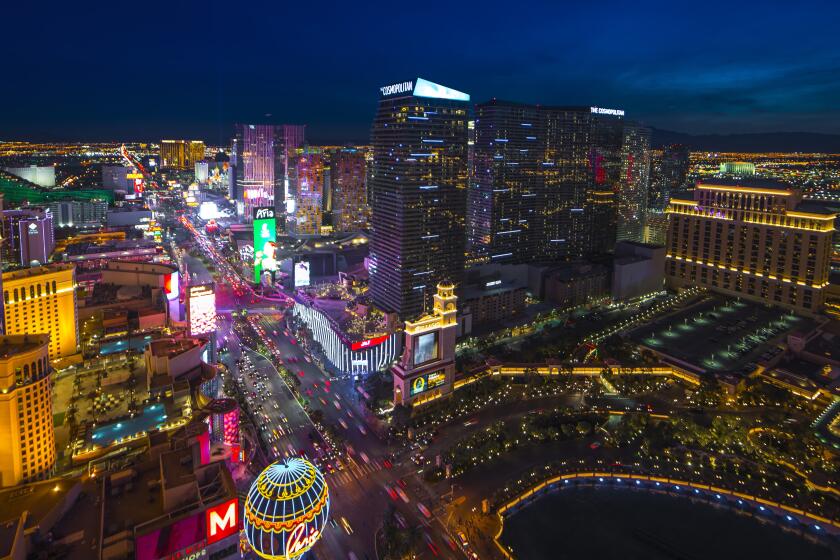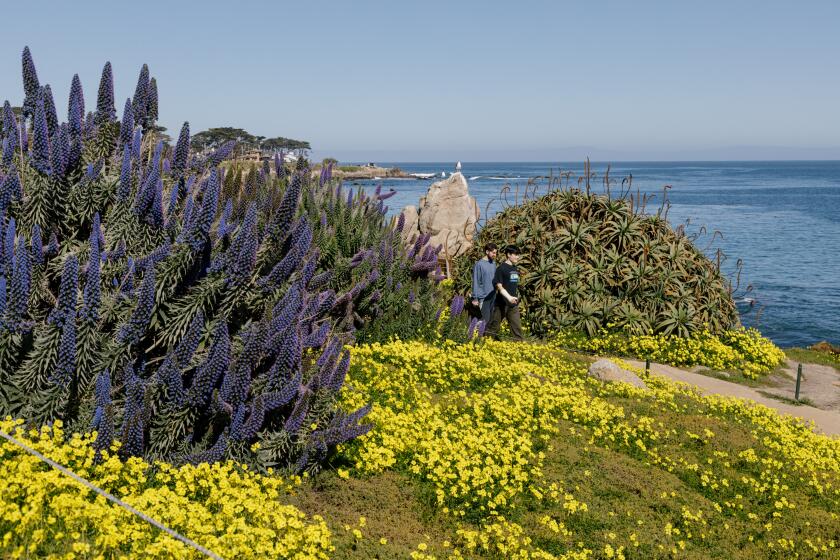Golden Gate Park a hidden gem in San Francisco

Discovering the park’s vast cultural riches can take days of exploration
I spent much of 2020 in the Bay Area with family. After my office closed and my roommates scattered, I opted to exchange my empty Washington D.C. apartment for the comforts of home. During my time on the West Coast, I made trips to Golden Gate Park a habit; I loved the slower pace of life in California, but I missed being in a city, especially one I hadn’t spent much time in since I’d moved to the East Coast three years earlier. There are parks in Palo Alto, of course — but not like this.
Until I moved home, I hadn’t thought about the park in a while. My memories of it mostly consisted of losing my mind at the California Academy of Sciences dinosaur exhibit when I was 5 or, years later, continually refreshing my browser as I tried to score tickets to an annual music festival there as a teenager. Once the city’s pandemic restrictions eased, my mom and I made a habit of driving to San Francisco whenever we could, savoring long walks up the less-populated hills and shorter lines at our favorite spots. It was then that I rediscovered as an adult the park I had frequented as a child.
“Park” is a misleading label for the 1,017-acre complex on the west side of the city. The approximately 3-mile-long, half-mile-wide rectangle that stretches from the Pacific Ocean in the west to Haight-Ashbury in the east contains a lot more than grass and swing sets. Like San Francisco itself, Golden Gate Park, which celebrated its 150th birthday in 2020, is home to a little bit of everything. Its attractions include popular museums, gardens large and small, 10 lakes, several strange relics of the past and, implausibly, a bison paddock. Several of the park’s most famous destinations, including the Conservatory of Flowers and the Japanese Tea Garden, have stood in some form since the 19th century, when a booming San Francisco was the backbone of the newly settled West.
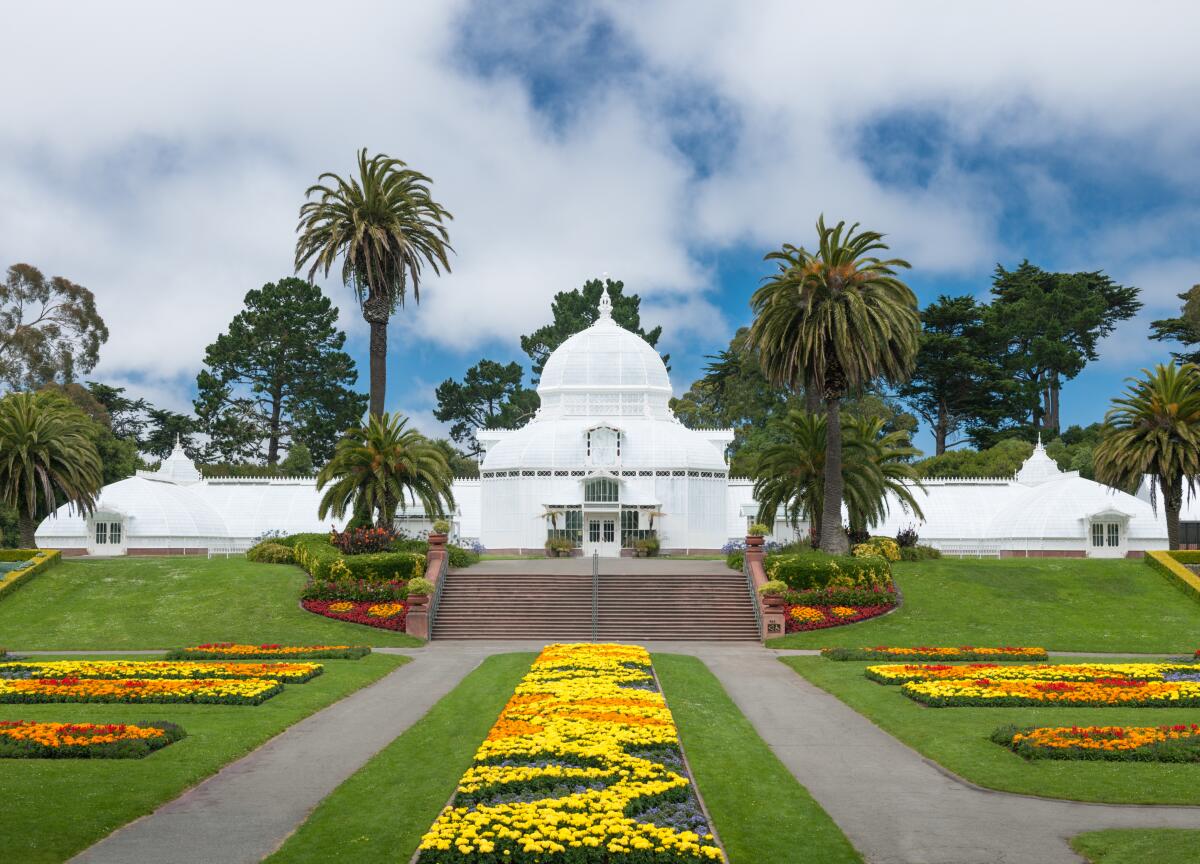
When you stand at the western end of the park, which hugs the Great Highway along the Pacific Coast, it’s tough to imagine how the lush green expanse ever got there. In fact, the park is one of the more productive results of the rivalry between the East and West coasts: In the 1870s, Golden Gate Park was sculpted from sand dunes, the wild and seemingly uninhabitable “Outside Lands,” because city residents wanted a large public park like the one New Yorkers got when Central Park opened to the public in 1859. William Hammond Hall, a 24-year-old engineer, was awarded the job after a more modest proposal by Central Park designer Frederick Law Olmsted was rejected — ironically, for not looking enough like Central Park. (Olmsted’s design used the land’s natural terrain and would have required less irrigation.)
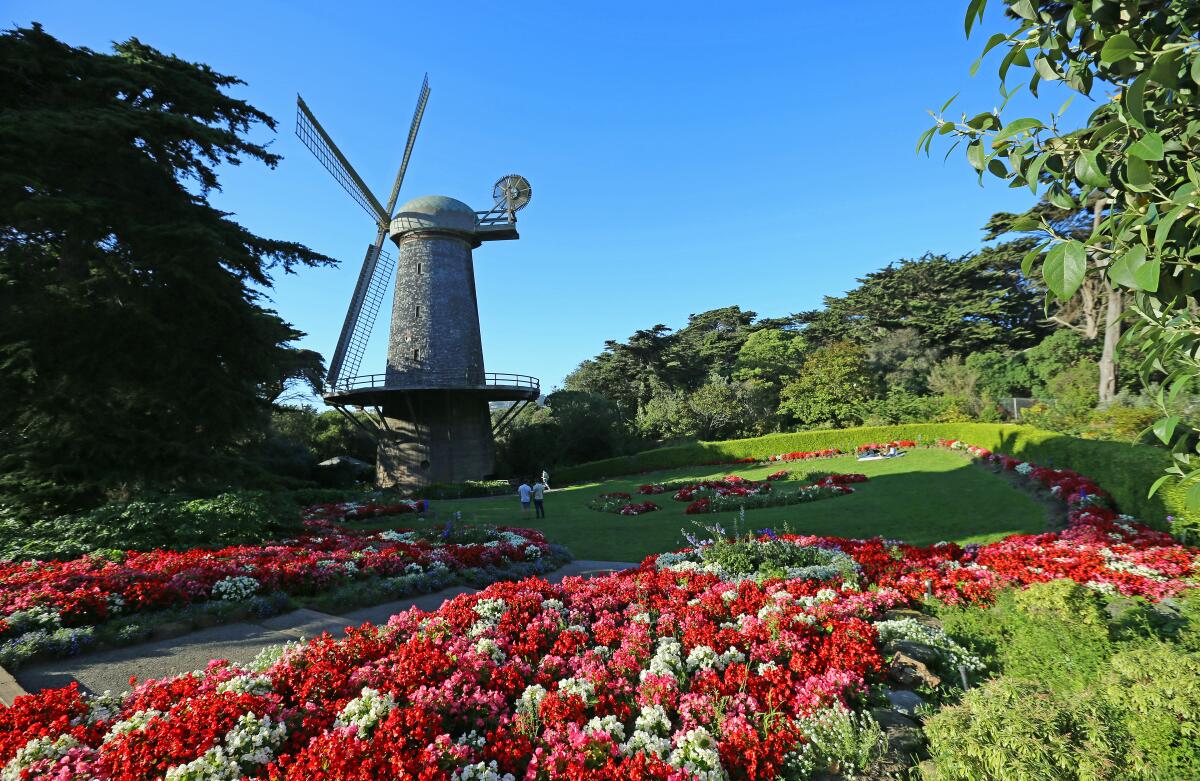
Hall set his green meadows, gardens and lakes atop unstable dunes byplanting trees and building an extensive irrigation system to channel water throughout the park. Key to this endeavor were the Dutch and Murphy windmills, built in the early 20th century and positioned at opposite ends of the park’s western side. They pumped up to 1.5 million gallons of water into the park daily and were decommissioned in 1935. A path between the two provides peeks of the ocean through cypress trees and runs into the Beach Chalet Brewery & Restaurant, a historic oceanside spot that serves locally brewed beer and fresh seafood. In the spring, the tulips and other flowers in the Queen Wilhelmina Garden, named for the ruler who is said to have gifted the city with the Dutch Windmill and flowers, paint the area with rich colors.
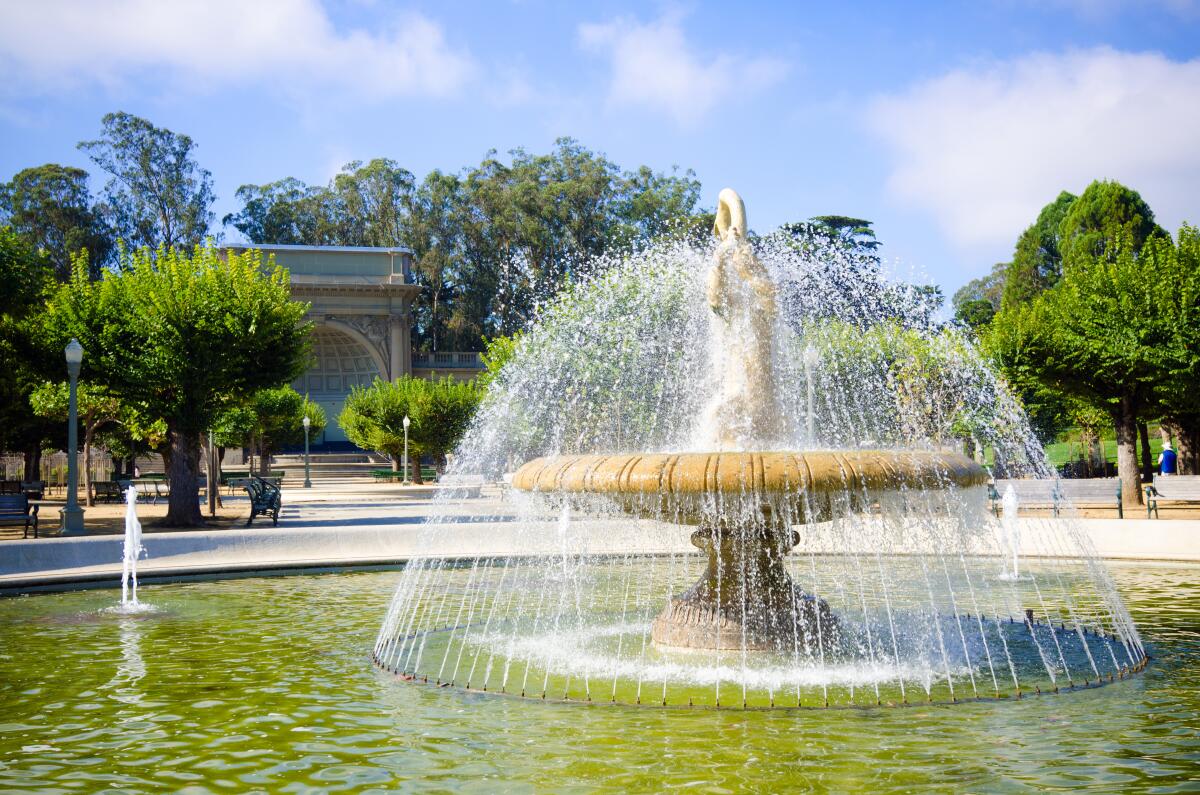
Like the best urban parks, Golden Gate has the power to transcend its location. John McLaren, a Scottish immigrant who was park superintendent for 53 years, took advantage of San Francisco’s mild but brisk climate and planted numerous flowers, trees and bushes, so something is always in bloom. His handiwork is well-maintained; my mom and I spent many summer afternoons on quiet walks down winding paths flanked by dahlias and rhododendrons, coffee in hand, the hustle and bustle of the Music Concourse that anchors the park’s busiest section physically close but seemingly miles away.
One moody fall afternoon found us in the San Francisco Botanical Garden wandering through a century-old redwood grove in the fog and straining to read the signage about their hardiness and resilience. As I craned my neck to see the treetops, it was impossible to hear any traffic or noises in this forest in the heart of the city. I felt my stress and anxiety float up and away through the trees.
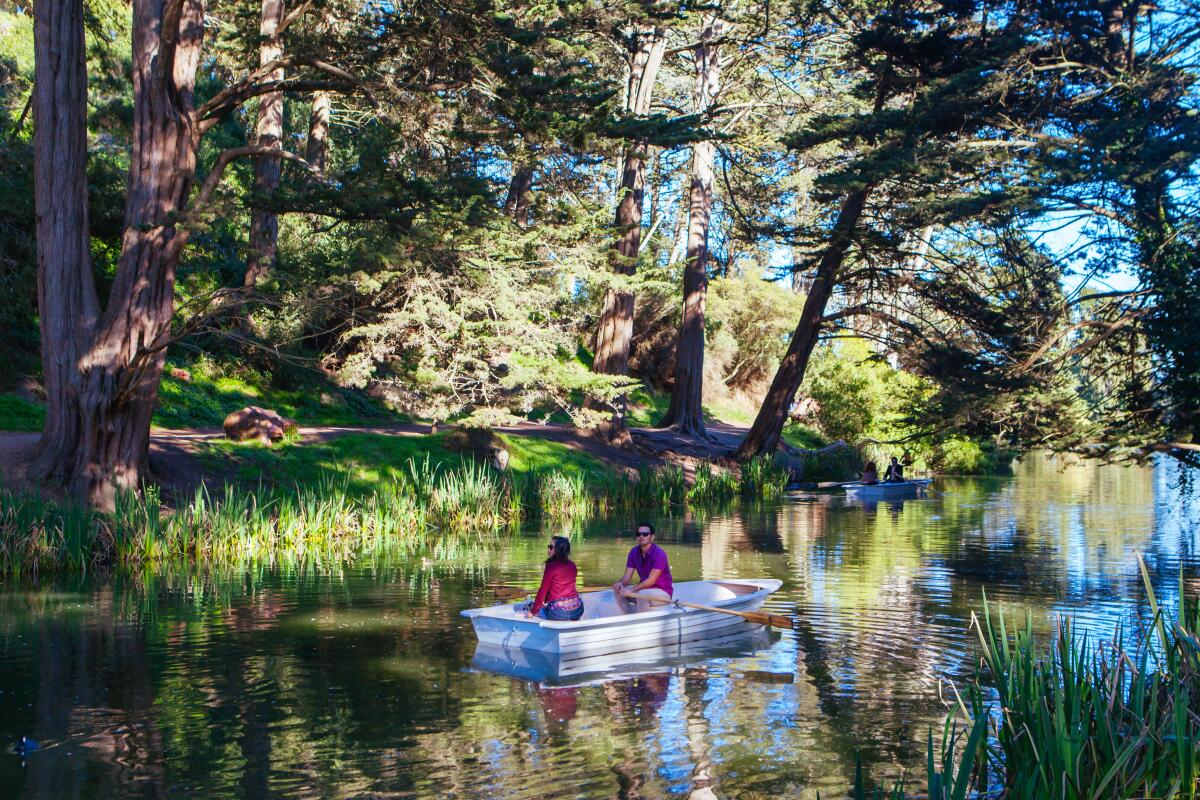
Golden Gate Park is vast, so exploring it thoroughly requires time and a car; several large paved roads snake through it, and there are smaller trails and streets throughout. That said, you’ll be well-rewarded if you get out and walk. A nearly mile-long hike down Middle Drive, closed to traffic during the pandemic, leads to Metson Lake, my favorite of the park’s lakes. The turquoise pool nestled next to the Polo Field is encircled by meadows that are dotted with people reading books and having picnics when weather permits. It doesn’t offer the boating that larger Stow Lake does or model yacht exhibitions like Spreckels Lake, but its secluded location makes it more peaceful — and, as observant visitors will notice, an attractive home to turtles.
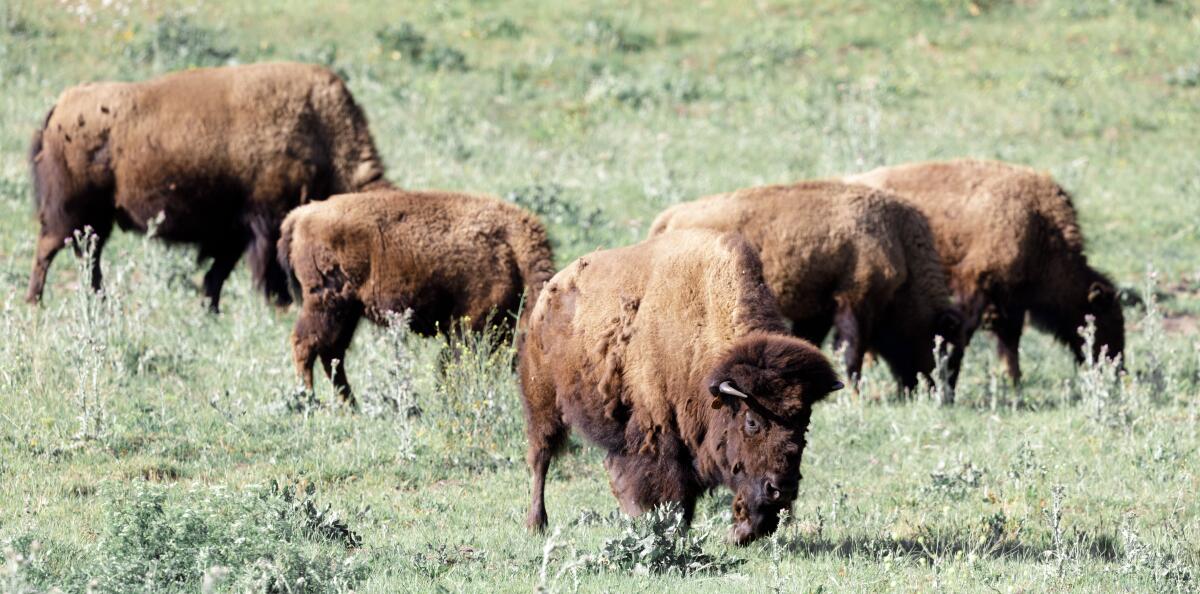
Changes in season brought new discoveries. A springtime visit to the park with my sister and her boyfriend took us to the Japanese Tea Garden, just off the Music Concourse and originally constructed as part of the 1894 World’s Fair to showcase the tranquility and precision of Japanese gardens. We wandered together over a high wooden bridge and past koi ponds into its serene woods. Changing course — and gears — we finished the day at the Bison Paddock, which was built in the 1890s and houses several female bison cared for by staff from the nearby San Francisco Zoo. The quiet agony of standing on our tiptoes to spot the bison in the tall grass beyond the fence was worth it when we caught a glimpse of one resting in the grass, almost asleep.
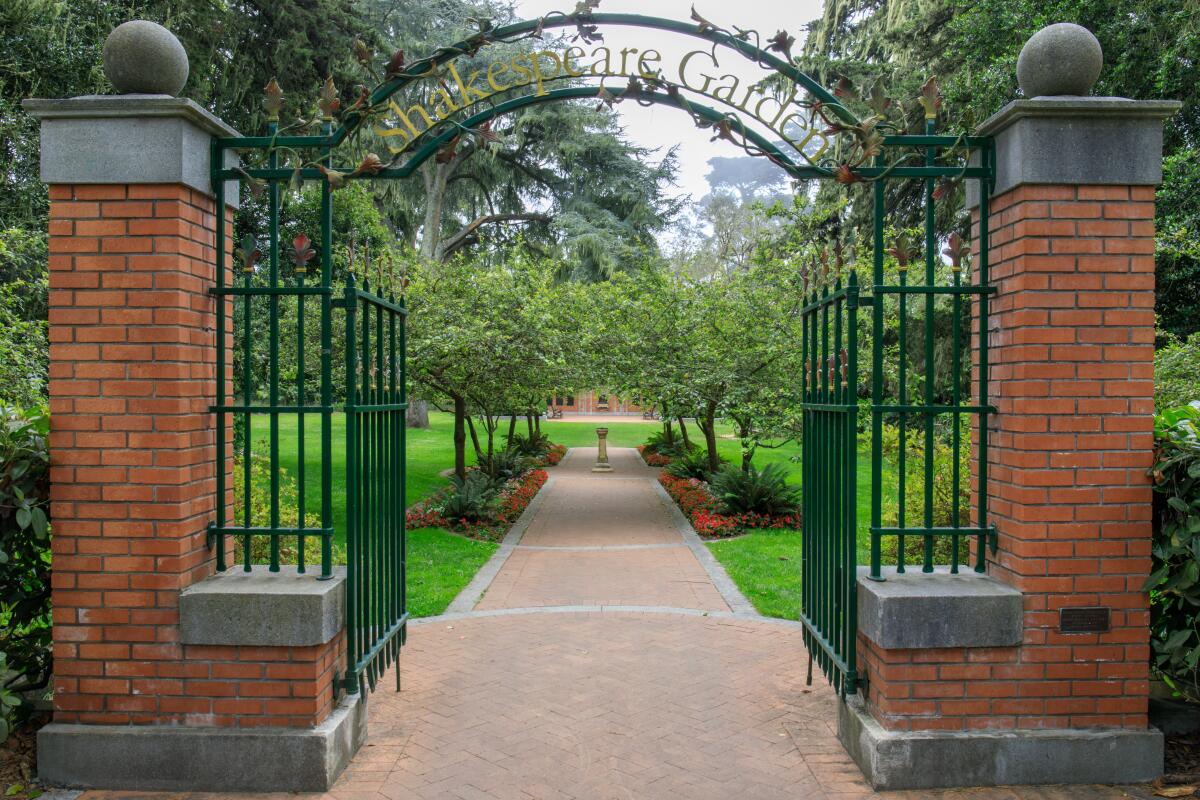
I came to know the park better as the months passed, but not so well that it stopped surprising me. One autumn day, I stumbled into the Garden of Shakespeare’s Flowers by accident while trying to find Twirl and Dip, an ice cream truck known for swirled soft serve enrobed in chocolate dip and sprinkled with sea salt. Behind the Academy of Sciences and through an ornate iron gate, this small formal garden houses some of the 200 or so flowers and plants mentioned in the Bard’s works. Past a sundial that reminds visitors to “count only sunny hours” is a bust of Shakespeare that watches over the space. And so I spent yet another afternoon in the park, this time curled on a stone bench and flipping through Susanna Moore’s “Miss Aluminum,” cone in hand. (Sorry, Shakespeare.)
One sunny May day shortly before I returned to Washington, I carried another soft serve even farther, this time with another book in tow, to the Rose Garden, a collage of peach, pink and red flowers made even more vibrant by the bright sun. Pumping music from the 6th Avenue Skate Park, a popular outdoor rink, was a welcome reminder of summer’s impending arrival on the walk back to my car.
Before the pandemic, I left my house looking for adventure; now, I mostly leave seeking relief from hectic workdays and a chance to quiet my racing mind. During my West Coast sojourn, I found both at Golden Gate Park.
If you go
WHAT TO DO
Golden Gate Park
Entrances on Lincoln Way, Fulton Street, Stanyan Street and Great Highway; (415) 831-2700; sfrecpark.org/770/Golden-Gate-Park
At 1,017 acres or approximately 50 city blocks, Golden Gate Park has something for everyone. Highlights include: the Bison Paddock, the Dutch and Murphy windmills, Stow Lake and Strawberry Hill, Koret Children’s Quarter and Carousel, Rhododendron Dell, Metson Lake, the Shakespeare Garden, the AIDS Memorial Grove and the National AIDS Memorial. Download a map to plan your visit. The park is walkable but massive; it’s better to drive or bike to specific spots. Underground paid parking is available. A free shuttle with stops along John F. Kennedy Drive operates weekends and holidays 9 a.m. to 6 p.m. Admission to the park is free, but some attractions, such as the Japanese Tea Garden, California Academy of Sciences, de Young Museum and Conservatory of Flowers, charge admission and may require reservations. Park open daily dawn to dusk; attraction hours vary.
de Young Museum
50 Hagiwara Tea Garden Drive, (415) 750-3600, deyoung.famsf.org
A renowned art museum with an industrial tower that rises above the park, the de Young is a treasure-trove of artworks, including Frederic Edwin Church’s “Rainy Season in the Tropics” and Ruth Asawa’s wire sculptures. Head to the Hamon Tower Observation Level for panoramic views of the city. Open Tuesday to Sunday 9:30 a.m. to 5:15 p.m.; closed Monday. Adults $15, seniors 65 and over $12, students with ID $6, those 17 and under free. Visitors can see permanent collections free without tickets daily at 4:30 p.m.
Japanese Tea Garden
75 Hagiwara Tea Garden Drive, (415) 752-1171, sfjapaneseteagarden.org
The oldest public Japanese garden in the United States was constructed for the World’s Fair in 1894 and includes serene paths, gardens and ponds. Open daily 9 a.m. to 4:45 p.m. November to February and until 5:45 p.m. March to October. Adult admission prices vary by season; seniors 65 and over and those 12 to 17 $7; children 5 to 11 $3; and kids under 5 free. Free admission Monday, Wednesday and Friday from 9 to 10 a.m.
San Francisco Botanical Garden
1199 Ninth Ave., (415) 661-1316, sfbg.org
More than 9,000 plants live in this 55-acre botanical garden. Highlights include magnolias, a century-old redwood grove, a fragrance garden filled with herbs and flowers, plus plants native to cloud forests that love the San Francisco fog. Check the calendar for special events, such as yoga classes and meditations, plus the annual Flower Piano, where pianos are installed around the garden and free for anyone to play when there aren’t scheduled concerts. Open daily 7:30 a.m. to 6 p.m. in spring and summer and until 4 and 5 p.m. in fall and winter. Adults $10 weekdays, $13 weekends; ages 12 to 17 and seniors $7; ages 5 to 11 $3; and 4 and under free. Free entry daily 7:30 to 9 a.m.
WHERE TO EAT
Beach Chalet Brewery & Restaurant
1000 Great Highway Hwy. at Ocean Beach, (415) 386-8439, beachchalet.com
Savory and sweet brunch dishes with a coastal touch abound at this restaurant with floor-to-ceiling windows at Ocean Beach. Head to the first-floor patio to sip locally made beers at the brewery. The Beach Chalet Visitor Centeron the ground level has an exhibit on the history of the park as well as murals. Open weekdays 11 a.m. to 9 p.m. and weekends 10 a.m. to 9 p.m. Brunch starters from $10, specials from $19 and entrees from $21.
Andytown Coffee Roasters
3655 Lawton St., andytownsf.com
This cozy local coffee shop and roastery supplies strong drinks and good vibes several blocks from Golden Gate Park and Ocean Beach. Adventurous caffeine fiends should try the Original Bird, a fizzy, cream-soda-like concoction made with espresso, sparkling water, brown sugar syrup and housemade whipped cream. To-go or pickup orders only. Open daily 7 a.m. to 5 p.m.
Twirl and Dip
Music Concourse Drive, (415) 307-0260, twirlanddip.com
Parked behind the Music Concourse near the Japanese Tea Garden, this beloved ice cream and soft-serve truck specializes in cool treats made from fresh local ingredients. Check Twitter (@Twirlanddip) or call to confirm its schedule and location; usually there on weekends. No debit or credit cards; cash or Venmo only. Soft-serve cones $5, chocolate dip $2.
INFORMATION
Carefoot writes for The Washington Post.
Get U-T Arts & Culture on Thursdays
A San Diego insider’s look at what talented artists are bringing to the stage, screen, galleries and more.
You may occasionally receive promotional content from the San Diego Union-Tribune.
